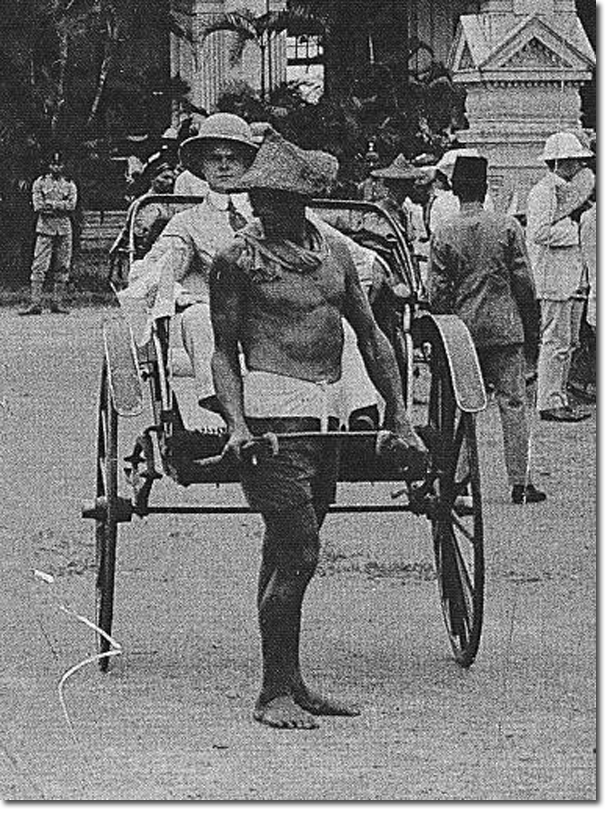|
|


|
|
An iconic image capturing the essence of European-Asian relations, highlighting contrasting postures, attire, and even colours.
Source: Gretchen Liu. Singapore: A Pictorial History
COLONIAL CONSCIENCE “I remember my manager, himself one of the European old-timers of Singapore, once remarking to me – “There are few pleasures in life to compare to riding behind a good [rickshaw] puller on a sunny morning”; and he was quite right. But, you will ask, was not your enjoyment of those rides along St. Andrew’s Road marred by qualms? Was is right for a healthy young Englishman to use another human being as if he were a draft animal? Well, I often mused upon that question as I contemplated my puller’s brawny back sweating in the heat and his muscular legs moving like pistons between the shafts. Was it really worse than letting a Chinese sampan man undertake the labour of rowing me out to a ship in the roads? Logically, perhaps not; yet one could not quite rid oneself of the feeling that one occupation was compatible with human dignity, and the other was not…. On the other hand, my puller needed a job and was obviously glad to have this one, and the freer and more independent life that it allowed, rather than working as a coolie in a godown or a rubber factory. And, after all, everywhere in Chinatown you would see Chinese coolies dragging heavy loads on the carts, and nobody ever questioned that.” (George Peet, Rickshaw Reporter 1985) |
A Splendid Little Colony: British Singapore 1819 - 1963 | Singapore
Armed Forces | Art and Culture | Articles | Biographies | Colonies | Discussion | Glossary | Home | Library | Links | Map Room | Sources and Media | Science and Technology | Search | Student Zone | Timelines | TV and Film